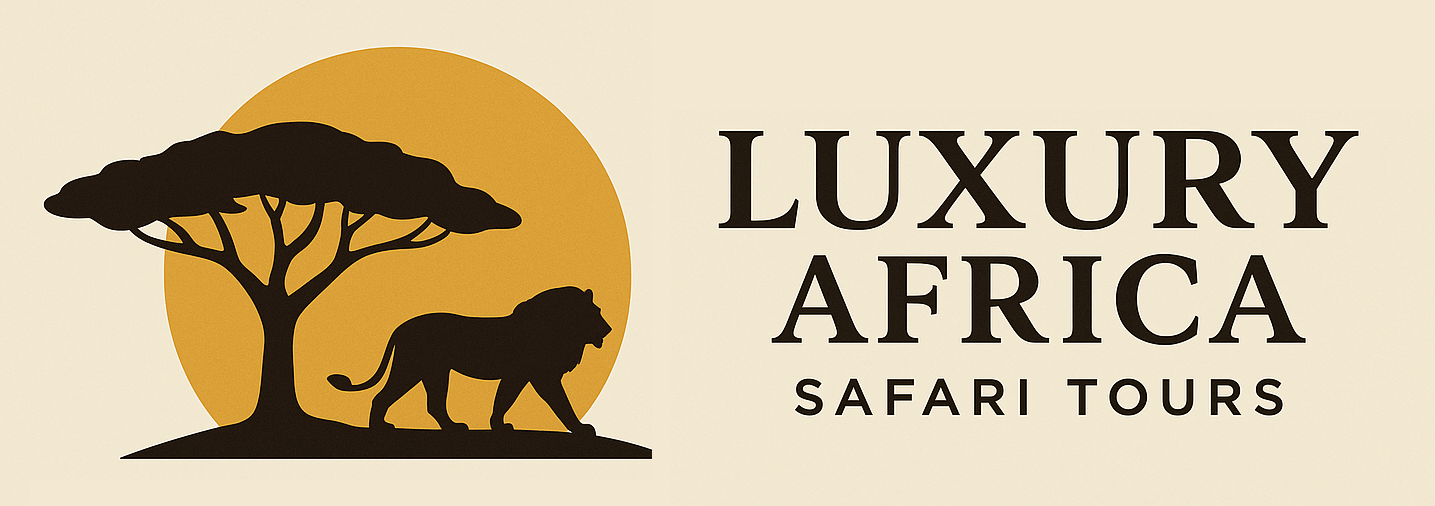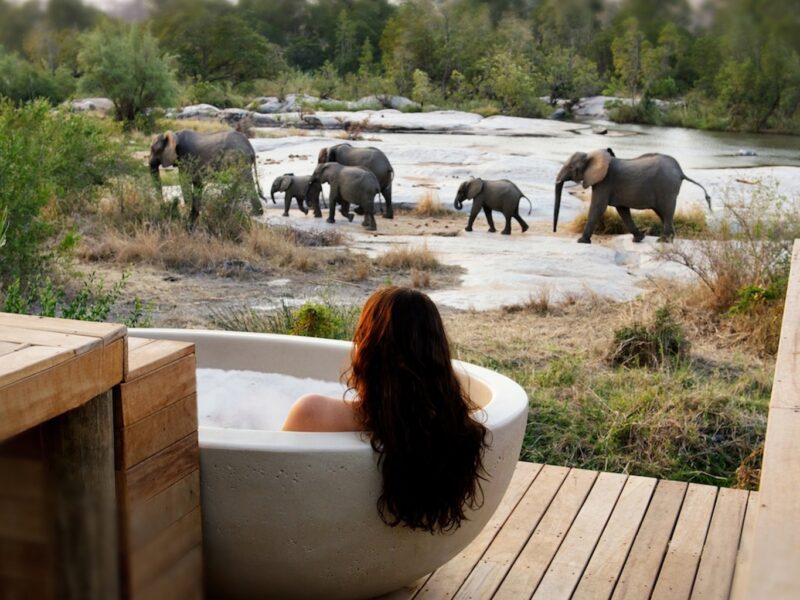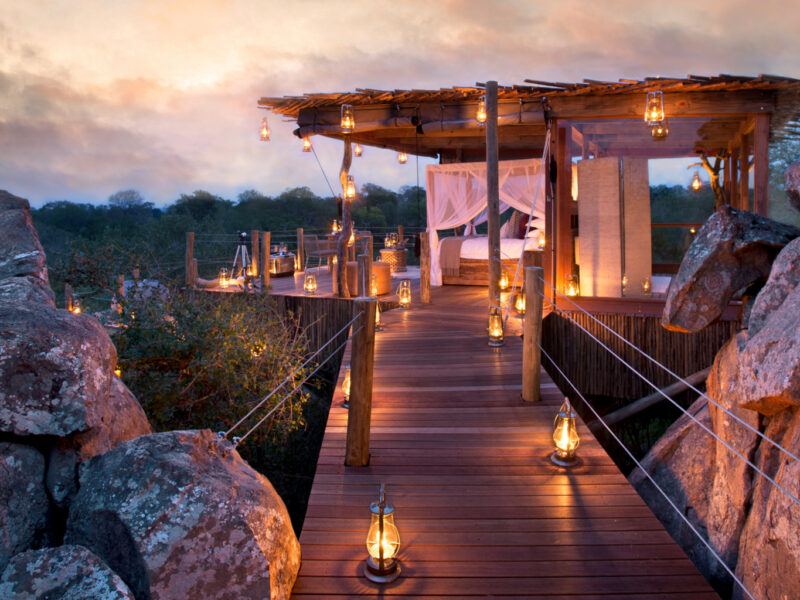A Guide to Gorilla Trekking in Bwindi
A journey to Bwindi Impenetrable National Park is more than a checklist wildlife experience—it’s a rare encounter with one of our planet’s most iconic and endangered species in an environment that feels untouched by time. The physical effort, the anticipation, the emotional rush of that one hour with the gorillas—it all weaves together to create a memory that lasts forever.
Tucked away in Uganda’s southwestern corner, Bwindi Impenetrable National Park is a realm of misty mountains, dense forests, and ancient biodiversity. Recognized as a UNESCO World Heritage Site, this park spans over 320 square kilometers and is one of the most biologically rich forests in Africa. It is most famous, however, as a sanctuary for nearly half of the world’s remaining mountain gorillas. Gorilla trekking in Bwindi is not just a safari—it’s a once-in-a-lifetime experience that immerses you in the heart of one of the oldest rainforests on Earth, where humans can lock eyes with wild gorillas in their natural habitat. This guide offers a comprehensive look into everything you need to know about gorilla trekking in Bwindi, from practical preparation to the emotional highs of encountering these majestic primates.
What to Expect from the Gorilla Trekking Experience
Gorilla trekking in Bwindi begins early in the morning, typically around 7:30 am, with a mandatory pre-trek briefing by rangers from the Uganda Wildlife Authority. You’ll be assigned to one of several habituated gorilla families in the sector of the park where you’re trekking—Buhoma, Ruhija, Rushaga, or Nkuringo. Group sizes are limited to eight people, and you’ll be joined by a guide and armed rangers. Treks can last anywhere from one to six hours depending on the gorillas’ movements, and the terrain varies from muddy forest floors to steep slopes and ridges. Once you find your designated group, you will spend exactly one hour in their presence. This moment is profound—watching a silverback command his troop, seeing a baby cling to its mother, or hearing the sounds of gorillas foraging and communicating just meters away. You’re required to stay at least seven meters away, although the gorillas may approach you of their own accord. Silence is observed to maintain calm and minimize disturbance.
Trekking Sectors in Bwindi
Bwindi is divided into four sectors, each with its own trailheads and gorilla families. Buhoma, located in the north, is the original and most accessible sector. It has some of the park’s oldest and most luxurious lodges and relatively easier trekking paths. Ruhija, to the east, is higher in elevation and offers a more tranquil experience with beautiful forest vistas and a wealth of birdlife. Rushaga, in the south, is home to the most gorilla families, making it ideal for travelers needing flexible permit options. It also hosts the gorilla habituation experience. Nkuringo, also in the south, is the most challenging in terms of terrain but rewards trekkers with dramatic views of the Virunga volcanoes and rolling hills. Each sector provides a unique experience, and your choice may depend on your preferred level of comfort, adventure, or exclusivity.
Buhoma: For First-Time Travellers
Of the four trekking sectors in Bwindi, Buhoma is the most established and remains the most popular among visitors. Located in the northern part of the park, Buhoma was the original launch point for gorilla trekking in Uganda and continues to serve as a well-developed gateway for those new to the experience. The terrain here is relatively gentle compared to other sectors, making it an ideal choice for travelers who may be wary of steep climbs or physically demanding hikes. The infrastructure in Buhoma is also more advanced, with a broad selection of lodges, from budget options to high-end luxury accommodations. This range allows for more flexibility in planning, especially for those booking close to travel dates. Gorilla sightings are frequent and reliably successful, and the rangers and guides here are some of the most experienced in the country. Another major advantage is that visitors staying in Buhoma can often access trekking routes in the adjacent Ruhija sector, offering the chance to explore multiple gorilla families and terrain types. This adds an extra layer of variety for those interested in undertaking more than one trek. The forest here is dense, but pathways are well-maintained, and the overall atmosphere of the region is serene and welcoming. Because it’s such a traveler-friendly location, Buhoma is often recommended for families, older travelers, or first-time visitors to Uganda. Lodges in this sector are usually set along the forest edge, allowing guests to enjoy the sights and sounds of the rainforest from the comfort of their balconies or dining areas. Local community tourism is also vibrant here, including village walks, craft markets, and cultural performances by the Batwa and Bakiga people. With the combination of accessibility, excellent guiding, comfortable accommodations, and scenic beauty, Buhoma offers a rounded and rewarding introduction to gorilla trekking that few other places can match.
Nkuringo: For Getting Off the Beaten Track
If you’re seeking an off-the-grid experience with a backdrop of jaw-dropping natural scenery, Nkuringo is the sector for you. Situated in the park’s remote southwest corner, Nkuringo is known for its steep terrain, breathtaking views, and low tourist volume. The sector sits high on a ridge, offering uninterrupted panoramas of the Virunga Volcanoes and the Albertine Rift Valley. With only a few lodges in the area, many of which are perched on the edge of the forest, it delivers a more exclusive and tranquil atmosphere. Properties such as Clouds Mountain Gorilla Lodge and Nkuringo Bwindi Gorilla Lodge are highly rated for both comfort and views. The treks here are considered some of the most challenging in Bwindi due to the steep ascents and descents, but for many, the reward far outweighs the effort. Gorilla groups in this region are reliably sighted, and the fewer number of visitors means that treks feel more personal and immersive. Nkuringo also offers crossover access to Rushaga, allowing for varied trekking experiences and the option to pursue the Gorilla Habituation Experience. This makes it a strong choice for more adventurous travelers who want to combine both scenic grandeur and rare gorilla interactions. Cultural visits are also possible here, including walking tours with the Batwa community or visiting nearby tea plantations. The sector’s remoteness adds to its mystique, making it a favorite among photographers, honeymooners, and seasoned safari-goers who want a less commercial, more rugged take on gorilla trekking. Trails are well-guided but may require physical readiness and good hiking gear. At the end of a long trek, returning to your hilltop lodge for sunset over the volcanoes is nothing short of magical. Nkuringo proves that sometimes, the harder the path, the greater the reward.
Rushaga: For the Habituation Experience
Rushaga, located in the southern portion of Bwindi, is the most gorilla-rich sector of the park. This region boasts the highest number of habituated gorilla families, giving travelers more options when it comes to permit availability and trekking preferences. But its real claim to fame is the Gorilla Habituation Experience, an offering that is unique to this sector. Unlike the standard gorilla trek, which allows only one hour with a fully habituated group, the habituation trek offers four hours with a semi-habituated family that is still adjusting to human presence. It’s a slower, more intimate encounter that allows you to observe more natural behaviors—from foraging to family interactions—and truly immerse yourself in their world. The trek begins early in the morning, with a maximum of four participants, and follows fresh trails from the gorillas’ overnight nests. Rangers and researchers guide the group, interpreting behavior and monitoring progress in the habituation process. As the gorillas move, the group follows, maintaining a respectful distance while soaking in every moment. The terrain in Rushaga can be steep and muddy, especially after rain, so physical preparation is important. Accommodations in the area are steadily growing, ranging from mid-range to luxury options, making the experience more accessible to various traveler types. Beyond the gorillas, the surrounding communities are active in conservation and cultural tourism. Visitors can engage with local craftspeople, participate in village tours, and learn about the vital role of community development in protecting gorilla habitats. The habituation process itself is a slow, complex journey that takes years to complete, and every visit helps fund and validate this critical conservation work. For those looking for deeper emotional resonance and a longer bond with these incredible animals, Rushaga delivers an unmatched experience.
Ruhija: For Scenic Trekking and New Openings
Perched at the highest elevation of any Bwindi sector, Ruhija offers a crisp, cool climate and sweeping vistas over the park’s mountainous interior. It is a quieter, less trafficked region that is home to four habituated gorilla families, making it an appealing alternative to the more crowded areas. Ruhija is particularly loved by birders, as the high-altitude forest is alive with rare and colorful species, including the elusive African green broadbill. The treks here tend to be a little more challenging than Buhoma but not as grueling as Nkuringo or Rushaga, placing it in the sweet spot for moderately fit travelers. Currently, accommodations in Ruhija are somewhat limited and primarily geared toward mid-range and budget travelers. However, this is set to change with the highly anticipated opening of Erebero Hills Asilia in 2026. Known for their commitment to sustainability and exceptional hospitality, Asilia Africa is expected to bring a new level of service and luxury to the Ruhija sector. Until then, many travelers choose to stay in Buhoma and make the short transfer to Ruhija for their trek, combining the comfort of Buhoma lodges with the rugged beauty of Ruhija trails. The landscape here is a mosaic of ridges, valleys, and waterfalls, often draped in mist, creating a dreamlike setting for wildlife encounters. Ruhija offers something different—less bustle, more birds, and a glimpse into an emerging trekking hub that will likely gain popularity in the coming years. Its tranquility and promise of future growth make it a hidden gem for now, and a rising star for travelers who want to get ahead of the crowd.
Gorilla Trekking Permits
A gorilla trekking permit is a legal requirement and must be secured well in advance due to high demand. As of now, foreign non-residents pay $800 USD, foreign residents pay $700 USD, and East African citizens pay 300,000 UGX. Permits are issued by the Uganda Wildlife Authority and are specific to the sector and gorilla group you’re assigned to. During peak seasons—June to September and December to February—permits sell out months in advance. For a deeper encounter, the gorilla habituation experience allows guests to spend four hours with a semi-habituated group under the supervision of researchers. This opportunity, only available in Rushaga, costs $1,500 USD and is limited to four people per day, offering an extended look at gorilla behavior and conservation efforts.
Physical Fitness and Health
Gorilla trekking is physically demanding, and the rugged terrain can be taxing even for those with moderate fitness. Hikes involve ascending and descending steep slopes, navigating thick undergrowth, and sometimes wading through muddy trails. Elevation ranges from 1,160 to 2,600 meters (3,800 to 8,500 feet), which can challenge even seasoned hikers. While no prior trekking experience is required, good cardiovascular health and stamina will greatly enhance your enjoyment and safety. You should also be in good health on the day of your trek. Gorillas are susceptible to human illnesses, especially respiratory infections, so if you show symptoms of cold, flu, or other contagious conditions, you may be denied participation to protect the animals.
What to Pack for Gorilla Trekking
The right gear can make or break your gorilla trekking adventure. Start with sturdy, waterproof hiking boots that offer good ankle support. Wear long-sleeved shirts and trousers to protect against scratches, insects, and nettles. A waterproof jacket or poncho is essential even in the dry season due to sudden rainforest showers. Gloves are recommended for grabbing vegetation and for stability on slippery terrain. Bring a lightweight daypack with at least two liters of water, energy snacks, sunscreen, insect repellent, and a packed lunch (if advised). A wide-brimmed hat and sunglasses can be useful for sun protection during exposed portions of the trail. Most lodges or ranger stations provide walking sticks, and it’s wise to hire a porter—not only do they assist with your bag, but you support the local economy directly. Lastly, bring a camera with a good zoom lens. Flash photography is strictly prohibited.
Best Time to Go
Gorilla trekking in Bwindi is available year-round, but the best time is during the dry seasons from June to September and December to February. These months offer better trail conditions, easier hiking, and less risk of sudden downpours. However, they are also the busiest periods, with higher demand for permits and accommodations. The wet seasons—March to May and October to November—bring lush scenery, fewer tourists, and sometimes more affordable rates, but the trails can become treacherously muddy and more physically demanding. Wildlife movements aren’t heavily seasonal, so gorillas can be tracked in any month. Your choice of timing may depend on your tolerance for muddy trails versus crowded trekking groups.
Conservation and Community Involvement
Gorilla trekking in Bwindi is not only a life-changing experience for travelers—it is also a cornerstone of conservation in Uganda. The revenue from trekking permits directly funds anti-poaching patrols, habitat preservation, and community development. Local communities benefit from tourism through employment, profit-sharing, and involvement in cultural tourism initiatives. A portion of permit fees is invested in infrastructure, healthcare, and education for surrounding villages. Bwindi is also home to the Batwa people, an indigenous forest tribe with deep ancestral ties to the region. Guided cultural visits offer travelers a respectful way to learn about Batwa traditions, music, and medicinal practices, while supporting cultural preservation and economic empowerment.




